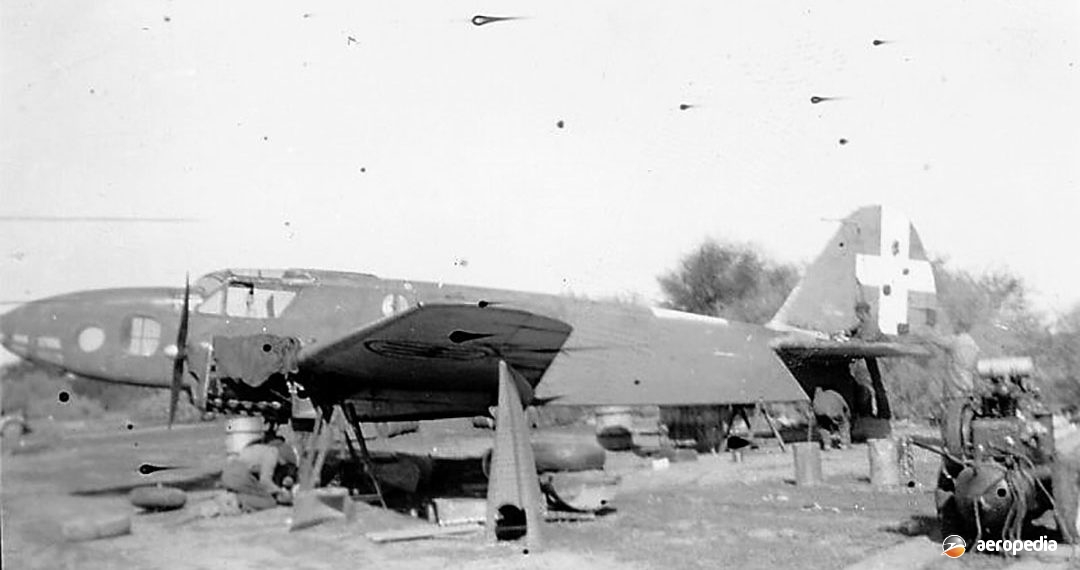Photograph:
Caproni Ca.309 Ghibli under repair at Castel Benito, Libya in January 1943 by No 3 Squadron RAAF personnel (Author’s collection)
Country of origin:
Italy
Description:
Light reconnaissance bomber
Power Plant:
Two 147 kw (197 hp) Alfa Romeo 115-II six-cylinder in-line inverted air-cooled engines
Specifications:
- Wingspan: 16.2 m (53 ft 1½ in)
- Length: 13.3 m (43 ft 6 in)
- Height: 3.25 m (10 ft 6 in)
- Wing area: 38.7 m² (53.15 sq ft)
- Max speed: 250 km/h (155 mph)
- Cruising speed: 210 km/h (130 mph)
- Initial rate of climb: 174 m/min (570 ft/min)
- Service ceiling: 4,500 m (14,764 ft)
- Range at 220 km/h (137 mph): 1,544 km (960 miles)
- Empty weight: 1,745 kg (3,848 lb)
- Loaded weight: 2,695 kg (5,942 lb)
History:
The Caproni Ca.309 Ghibli was a general purpose, light reconnaissance, bomber of low-wing configuration with a fixed spatted tailwheel undercarriage, and a single fin and rudder, which was built for the Italian Air Force in the mid 1930s. It saw some service in those roles during World War II in North Africa. The fuselage was of welded steel tube construction with fabric covering and had an all-wood wing. It had radio, camera, bomb racks, a machine-gun mounted in the port wing, and another machine-gun on top of the fuselage. It was capable of carrying light bombs, and provision was made for dual controls.
During the time that No 3 Squadron RAAF was operating in North Africa during World War II a Caproni Ca.309 light twin-engine communications monoplane of the Italian Air Force was captured, restored to airworthiness, and put into use by members of the unit for ferrying pilots, stores and supplies between various Allied centres. The machine was captured, along with a Siai Marchetti SM.79 torpedo bomber, at Castel Benito, Tripolitania in January 1943.
The aircraft served for some time and became known as ‘Gibby’s Ghibli’, named after Wing Commander R H ‘Bobby’ Gibbes of that unit. The aircraft carried RAF Middle East roundels and was painted with the No 3 Squadron code CV-V. After the unit moved from the area the aircraft was abandoned and was probably scrapped in later years.

